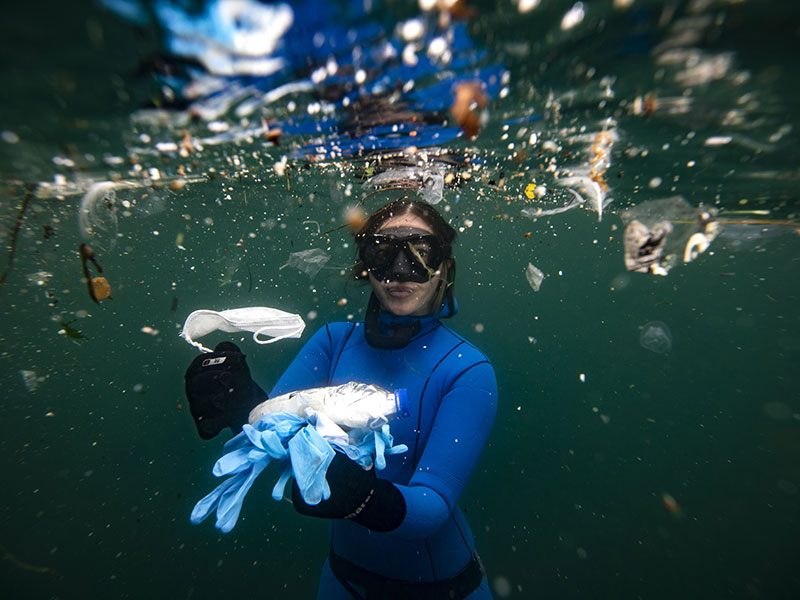The natural hub for energy solutions
Niedersachsen is the state of wind energy: 5,102 wind turbines producing more than 6,000 megawatts
Niedersachsen is the state of wind energy: 5,102 wind turbines producing more than 6,000 megawatts
Of the entire power requirement in Niedersachsen, 21 percent is met by wind energy. Prime Minister Christian Wulff wants to increase that share significantly: “Till 2012 we want to produce 26.5 billion kilowatt hours with wind energy; that is fifty percent of the electricity consumption in Niedersachsen. In 2021, Niedersachsen will feed more wind energy into the grid than is consumed in our state.”
Niedersachsen wants to reach that goal with the help of offshore wind parks and the so-called repowering meaning the exchange of older and smaller turbines with new, higher and more efficient ones. Thus, more output with fewer turbines can be realised, doubling or even tripling the overall capacity. Niedersachsen has a lot of these small wind turbines from the beginnings of the industry. Its windy coastal region saw the installation of the first turbines by farmers who sought a second income source. Today, most wind parks are put up by energy suppliers.
Over time and with the advantage of an early start, great expertise has accumulated in Niedersachsen. The German market leader Enercon has its headquarters there as well as numerous other companies such as GE Wind Energy GmbH, Prokon Nord Energiesysteme GmbH, Plambeck Neue Energie AG and Bard Engineering GmbH and their suppliers. They export their know-how worldwide: The companies have an export quota of more than 80 percent. The global wind energy market has increased by 30 percent in 2008 for the last three years in a row, and German manufacturers supply more than a third of the world market. The biggest market for the past four years has been the USA.
The industry is supported by the research institutions located in the state such as the German Wind Energy Institute DEWI GmbH, founded by the state of Niedersachsen and ForWind, the centre for Wind Energy Research of the universities Oldenburg and Hanover. The DEWI provides research and services connected with the realisation of wind farms, while ForWind focuses on the utilisation of offshore wind power.
Natural gas
But Niedersachsen is not only leading in wind energy: It supplies almost 95 percent of the natural gas produced in Germany. The most productive gas fields are located there as well as more than 90 percent of Germany’s gas reserves. Employment rates and investments are increasing annually. According to the Association of German Oil and Gas Producers in Hannover, the number of employers in their member companies has risen by 40 percent since 2004. About 80 percent of all employers are working in Niedersachsen. In 2008, the companies increased their investments in Germany by 43 percent to €555m.
Most of Germany’s natural gas storage facilities are located in Niedersachsen, too, among them the largest in Western Europe. Four billion cubic metres of gas are stored in the WINGAS facility in Rehden. ExxonMobil operates two large storage facilities in Uelsen and Dötlingen, big enough to store 2.6 billion cubic metres. For comparison: 5.1 billion cubic metres of gas are annually produced in Niedersachsen. That is enough to supply more than two million households.
Moreover, the company BEB Erdgas und Erdöl GmbH has constructed one of the largest European gas desulphurisation plants in Großenkneten. It cleans the gas of sulphur to make it usable. That makes the plant one the world’s largest productions facilities for natural gas sulphur. Almost 800,000 tons of sulphur are sold every year, mainly to clients from the chemical industry.
Niedersachsen is also the leading region for bio energy in Europe. There are an estimated 900 biogas plants currently in operation, producing electricity by feeding on liquid manure, biological waste and energy crops. They produce more than a third of the total amount of biogas in Germany and cover approximately five percent of the state’s power requirement. “We will double that share to ten percent by 2012”, announced Christian Wulff in September 2008.
German market leader EnviTec Biogas AG from Lohne expects a growth in sales between 44 and 74 percent for 2009. The company is represented in 15 European countries, India and China. It currently builds the world’s biggest biogas plant, which will be able to supply a town with 50,000 inhabitants with electricity. EnviTec Biogas India was awarded the gold medal in the Asian Power Awards 2008 in the category “Best Decentralised Power Plant in Asia” for the construction of 30 biogas plants in Punjab. 22 percent of the turnover is already realised abroad; the company expects that share to rise to 50 percent in the coming years.
Cogeneration of heat and power
The 2008 amendment of the Renewable Energy Sources Act – a law obliging operators of power grids to give priority to electricity from renewable energies and to pay fixed prices for this – increased the compensation for bio energy and also promotes using the waste heat. Accordingly, the cogeneration of heat and power is increasing. For example, the biogas plant Hortitherm Hinrichsfehn in Wiesmoor was granted an award for its exemplary concept: The waste heat is used by a garden centre to heat their hothouses. The owners of the garden centre build the plant in 2006 because of rising prices for energy.
For the same reason, whole communities are thinking about producing their own power and heat with biomass. One model village even meets its whole energy demand with a biogas plant: In Jühnde, the electricity is fed into the grid, while the heat is transported to consumers as hot water via a district heating network. The community Lathen is also going to build a heating network to supply seven public institutions and a large amount of private households with heat from a nearby biogas plant, thus saving costs and diminishing CO2 emissions.
Further information:
Niedersachsen Global GmbH (NGlobal)
Osterstraße 60, D-30159 Hannover
T +49(0)511.89 70 39 – 0
F +49(0)511.89 70 39 – 69
Email: info@nglobal.de
www.nglobal.de













